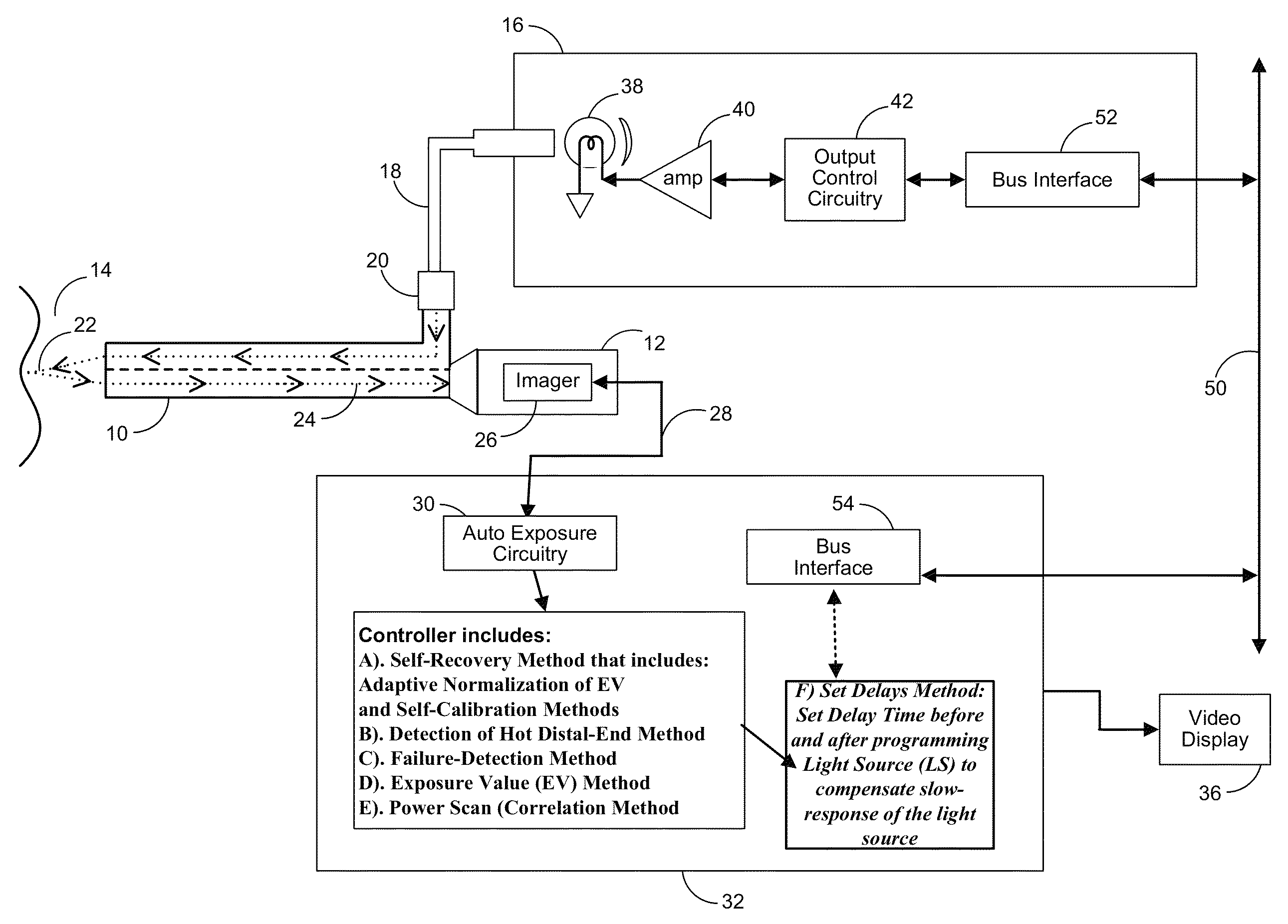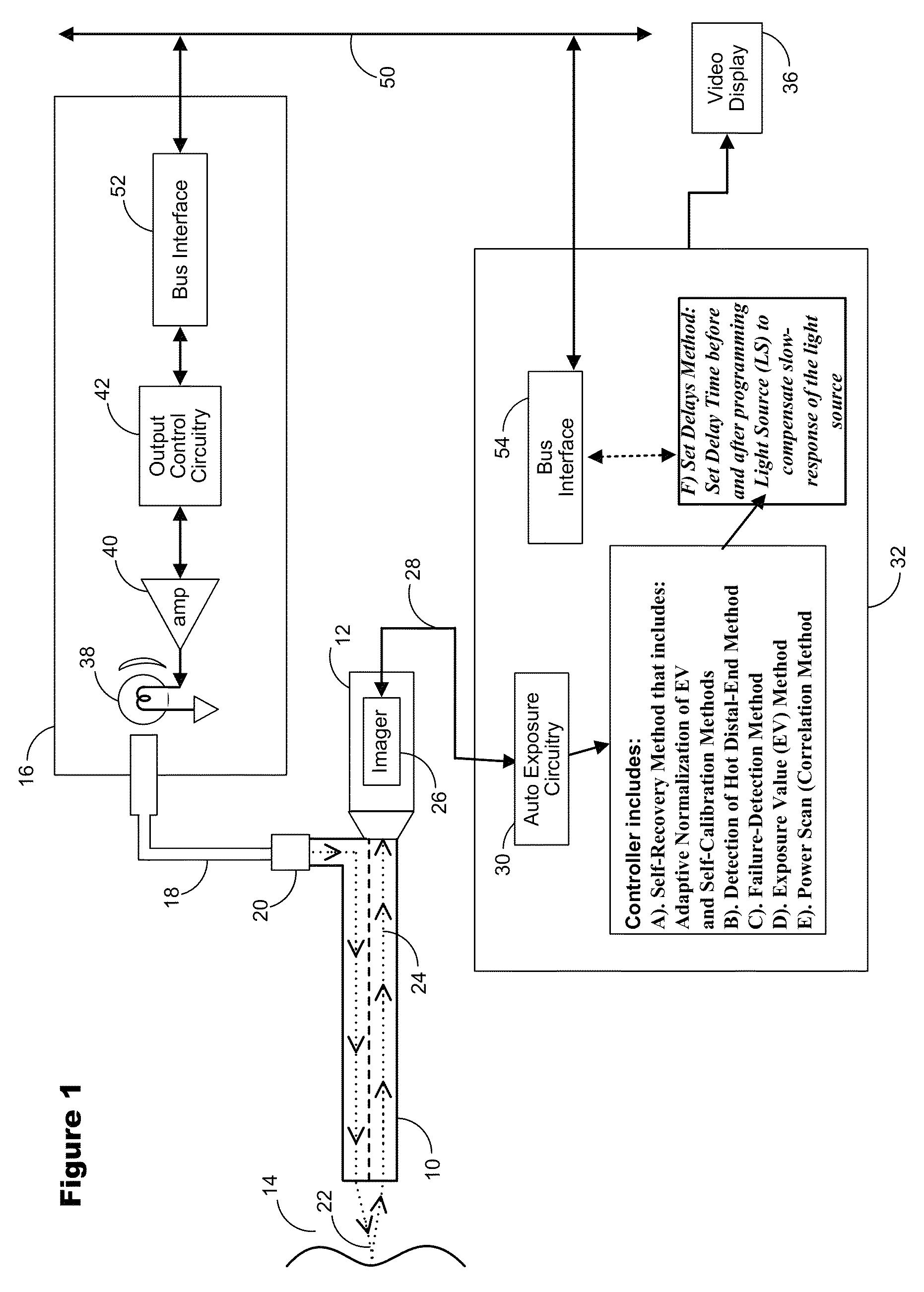Method and apparatus for protection from high intensity light
a technology of high intensity light and protection apparatus, applied in the direction of optical radiation measurement, instruments, television systems, etc., can solve the problems of affecting the image quality of the image, affecting the image quality, and affecting the safety of patients, so as to minimize the number of increments and optimize the effect of image quality
- Summary
- Abstract
- Description
- Claims
- Application Information
AI Technical Summary
Benefits of technology
Problems solved by technology
Method used
Image
Examples
Embodiment Construction
[0097]With reference to FIG. 1, an endoscope 10 is illustrated having a camera head 12 mounted thereto at the proximal end to produce video images in a manner for example as described in the aforementioned U.S. Pat. No. 5,162,913 to Chatenever, et al. The distal end of endoscope 10 is directed at tissue 14 to inspect the tissue with light from a high intensity light source 16 and passed to the distal end through a light guide cable 18. Typically, light guide cable 18 can be disconnected from endoscope 10 at connector 20, thus, posing a safety hazard as described above.
[0098]The light from light guide cable 20 is directed to illuminate tissue 14 as suggested with path 22 and light reflected by tissue 14 is passed along optical path 24 to imager 26 within camera head 12. Imager 26 detects light reflected off tissue 14 by means of optical path 24. Imager 26 may be any type commonly used within the art, such as but not limited to CCD, CID or CMOS imagers. Camera head 12 produces image s...
PUM
 Login to View More
Login to View More Abstract
Description
Claims
Application Information
 Login to View More
Login to View More - R&D
- Intellectual Property
- Life Sciences
- Materials
- Tech Scout
- Unparalleled Data Quality
- Higher Quality Content
- 60% Fewer Hallucinations
Browse by: Latest US Patents, China's latest patents, Technical Efficacy Thesaurus, Application Domain, Technology Topic, Popular Technical Reports.
© 2025 PatSnap. All rights reserved.Legal|Privacy policy|Modern Slavery Act Transparency Statement|Sitemap|About US| Contact US: help@patsnap.com



